Technical support
Fields of our research Smart Power Distribution Technical supportTechnical Support for Power SW Stability and Quality Inspection
The Smart Power Distribution Laboratory has established and been operating an SW Quality Inspection Platform in order to improve the quality of software. This system allows a user to test the development output easily in a quantitative manner. Since being certified as technical suitable for the test field by KOLAS, the system has been contributing to enhancing the quality of the software significantly. And, due to the recent issues regarding the security of power grids, the security and reliability of the operating software are becoming more and more important.
Therefore, it is imperative that the software is put to a test in a live working environment before it is applied in full-scale in the field. The SW Stability Testing Ground of KEPCO Research Institute is a large-scale test ground that has an MG, DAS, and other equipment in a simulated environment to run the final security and performance test in an environment that is identical to the live working environment. The testing infrastructure established here include the DAS to test the distribution system, FRTU, HIL test simulators, as well as the ones to test a micro-grid such as a general MG platform, PV, WE, ESS, diesel power generator, transformer and operating system. The SW Quality Management System is composed of 20 analysis tools that automatically test the coding rules, security violations, overlapping, and outputs to detect any anomaly and check the system whenever needed. In addition, they open the testing ground to other organizations related to the power industry and provide technical support to them.
In the future, they plan to use research and testing equipment that are in compliance with international standards in order to certify the reliability of domestic and foreign power equipment to contribute to the advancement of the technologies in the power industry and enhancement of competitiveness.
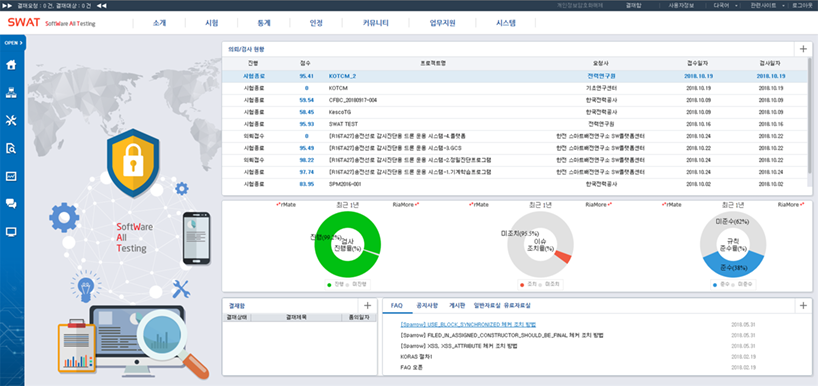 |
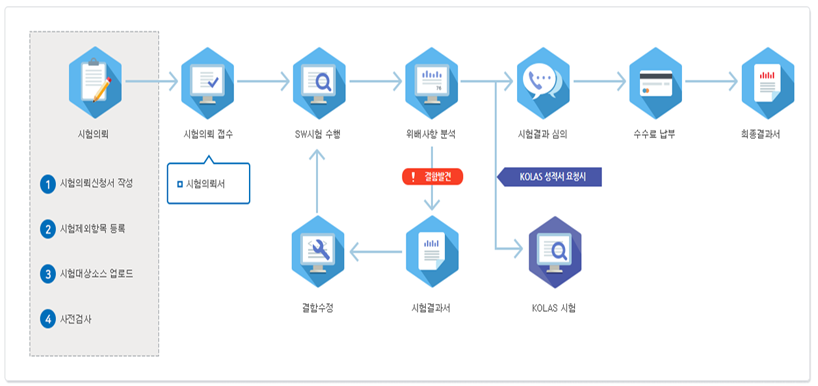 |
| [ SW Testing Tool ] | [ SW Quality Inspection Technical Support Process ] |
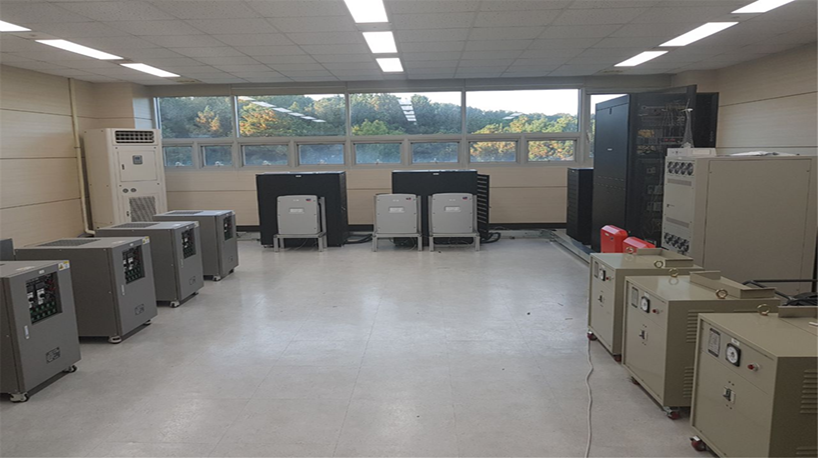 |
 |
| [ KOLAS SW Testing and Certification Center ] | [ SW Performance and Quality Inspections ] |
Technical Support for Remote Metering and Low-Voltage Instrument DLMS Certification Test
The Smart Power Distribution Laboratory conducts certification tests for the communication performance between low-voltage watt-hour meters and PLC modems, providing the foundation for a successful implementation of the low-voltage remote metering business. The lab acquired the license as a 3rd Party Testing Agency in March 2006 and secured corresponding testing equipment. And, since December of the same year, the lab has been conducting international standard protocol certification tests, KEPCO-DLMS protocol certification tests and KEPCO standard qualification tests.
With the recent take-off of the AMI business of KEPCO, the demand for the performance test of the main AMI materials and the low-voltage voltmeters is increasing rapidly. To respond to such demands in an efficient manner, the company introduced the BMT/Preliminary Performance Test Procedures and Watt-Hour Meter Functional Test Procedures, along with the development of the test tool and establishment of a professional testing system. With this, the company is still working on to make the testing business more reliable and efficient.
| Name of Test/Year | '06 | '07 | '08 | '09 | '10 | '11 | '12 | '13 | '14 | '15 | '16 | '17 | '18 | Total |
|---|---|---|---|---|---|---|---|---|---|---|---|---|---|---|
| DLMS International Certification Test | 0 | 2 | 0 | 0 | 0 | 0 | 0 | 0 | 0 | 0 | 0 | 0 | 0 | 2 |
| KEPCO DLMS (Development Demonstration Test) |
6 | 152 | 15 | 12 | 9 | 1 | 10 | 19 | 10 | 13 | 2 | 2 | 6 | 257 |
| E-type Watt-hour meter | 0 | 0 | 0 | 3 | 35 | 9 | 23 | 1 | 3 | 9 | 4 | 1 | 0 | 88 |
| Standard watt-hour meter certification test | 0 | 31 | 97 | 35 | 16 | 13 | 17 | 3 | 5 | 2 | 2 | 1 | 0 | 222 |
| G-type Watt-hour meter certification test | 0 | 0 | 0 | 0 | 0 | 0 | 0 | 14 | 33 | 34 | 26 | 12 | 13 | 132 |
| Ea.-type watt-hour meter certification test | 0 | 0 | 0 | 0 | 0 | 0 | 0 | 0 | 2 | 14 | 10 | 15 | 14 | 55 |
| High-voltage equipment remote communication test | 0 | 0 | 0 | 12 | 3 | 4 | 4 | 3 | 0 | 2 | 2 | 1 | 0 | 31 |
| Others (instrument performance/defect analysis) | 0 | 1 | 14 | 12 | 45 | 28 | 38 | 4 | 0 | 1 | 0 | 0 | 0 | 143 |
| Total | 6 | 186 | 126 | 74 | 108 | 55 | 92 | 44 | 53 | 75 | 46 | 32 | 33 | 930 |
 |
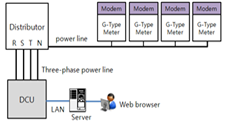 |
 |
| [ Low-voltage watt-hour meter functional certification test ] | [ A diagram of the field test of a watt-hour meter ] | [ BMT/preliminary performance test for AMI materials ] |
Support for performance test of a flame-proof suit for arc protection
The domestic criteria for arc protection require that a worker who works at an electrically charged line with a voltage of 600V or higher must be provided with and wearing a flame-resistant or flame-retardant suit. But, there had not been any requirements for a low voltage not exceeding 600V (Article 332 Rules on Industrial Safety Criteria, Safety and Health Corporation).
KEPCO is voluntarily complying with the requirements of IEEE 1584 and NFPA (National Fire Protection Association) 70E. Normally, when you have a short at a low-voltage line, the incident energy of the arc is as high as 19 cal/㎟, which is considered and handled as a PPE (Personal Protective Equipment) Grade 3 condition.
The Arc Testing Ground in Gochang Testing Ground is currently providing technical support for the ‘Arc-Protection Flame-Proof Suit Performance Test,’ which has been commissioned by the Department of Industrial Safety under the Office of Safety and Security. The testing ground comprises a short transformer (3-phase, 1MVA), low-voltage artificial failure generator, test cubicle panel, and a multi-dimensional arc tester for testing the flame-proof suit. In order to enhance the reliability of the result, the phenomena that occur in a real accident are reproduced to perform the performance test. And, the test process is being improved in order to enhance efficiency.
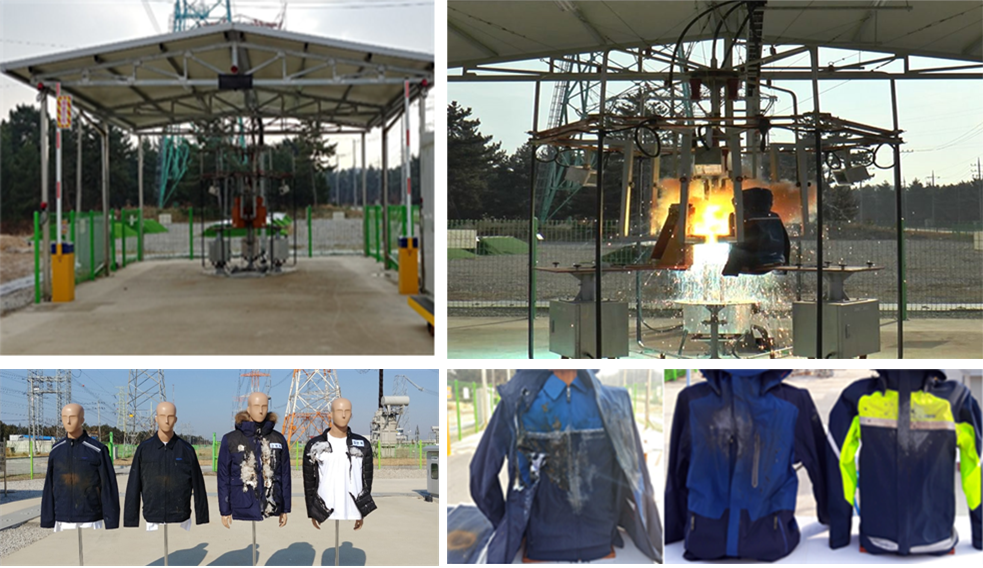 |
|
| [ Photos of arc testing ] | |
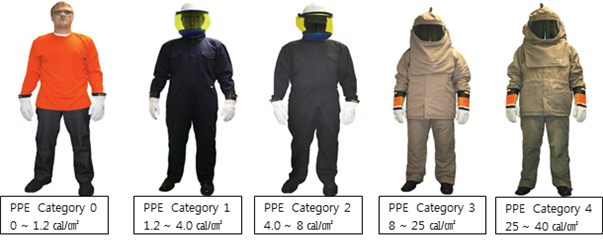 |
| [ NFPA 70E PPE ] |
Technical support for the development of IoT Sensors
KEPCO has invested significantly and launched a number of pilot projects in order to commercialize the IoT systems for self-diagnosis of the power distribution system. Based on the research projects in 2015, the company established the initial and second test beds, while gradually securing the necessary technologies and developing a system that can be proliferated across the country. They are providing support for developing IoT smart sensors that are creative and of a high-performance to monitor the status of power distribution equipment. The company opened the IoT Open Lab to the public, so that they can access the technical data and perform power-IoT system link-up, and performance verification.
Recently, they launched services such as function verification support and the smart sensor function verification where a partial discharge signal of the distribution equipment can be detected by a magnetic sensor, so that the energy harvesting module, which converts the magnetic field generated by the load current into power. In the case of the energy harvesting module, it can recharge the batter of the smart sensors used in IoT. So, there is no need to worry about the batteries. The grid is composed of high voltage lines, with the cost of working on it being high. Therefore, this new technology is expected to be very useful. Also, the partial discharge detection smart sensor uses a magnetic field sensor. As it does not need to use a steel core, the size and cost of these products can be reduced significantly, making them highly useful.
The Smart Power Distribution Laboratory will continue developing the IoT-based technologies which are the core technologies of the 4th Industrial Revolution, while establishing the business environment for an open IoT business environment to invigorate the industrial ecosystem and leading the way to enhancing competitiveness in the world market. To use the IoT Open Lab, sign up at the SPIN website (http://spin.kepco.co.kr)에 and fill out the demonstration support request form to contact the person in charge for a discussion.
* Energy Harvesting: An environmentally-friendly technology that generates a small amount of electricity using energy sources such as the sunlight, kinetic energy of a vehicle, vibration, communication radio wave, and body temperature, etc. This technology can be used to power sensors, wireless communication, or other applications with a low power demand.
** IoT: The Internet of Things, where various objects are equipped with sensors and communication features that will connect them to the Internet, so that such objects may exchange data between them, learn, extract useful information and control it.
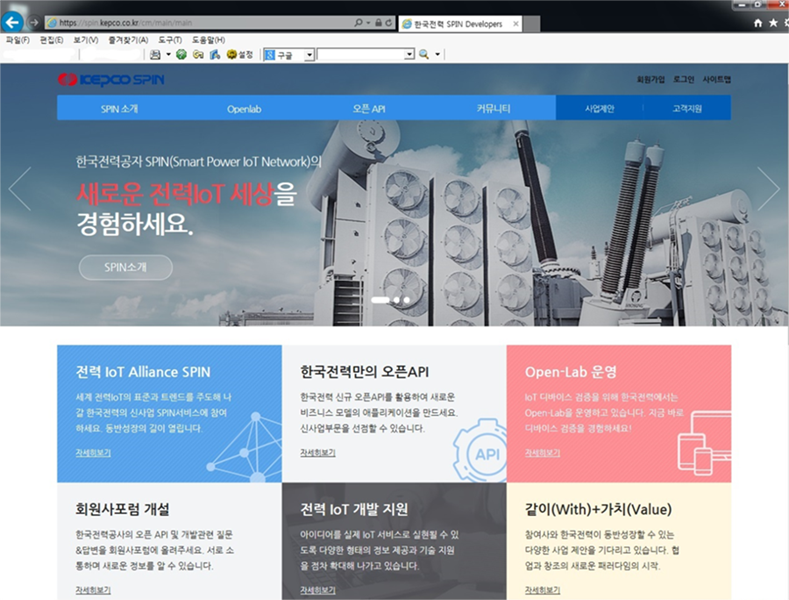 |
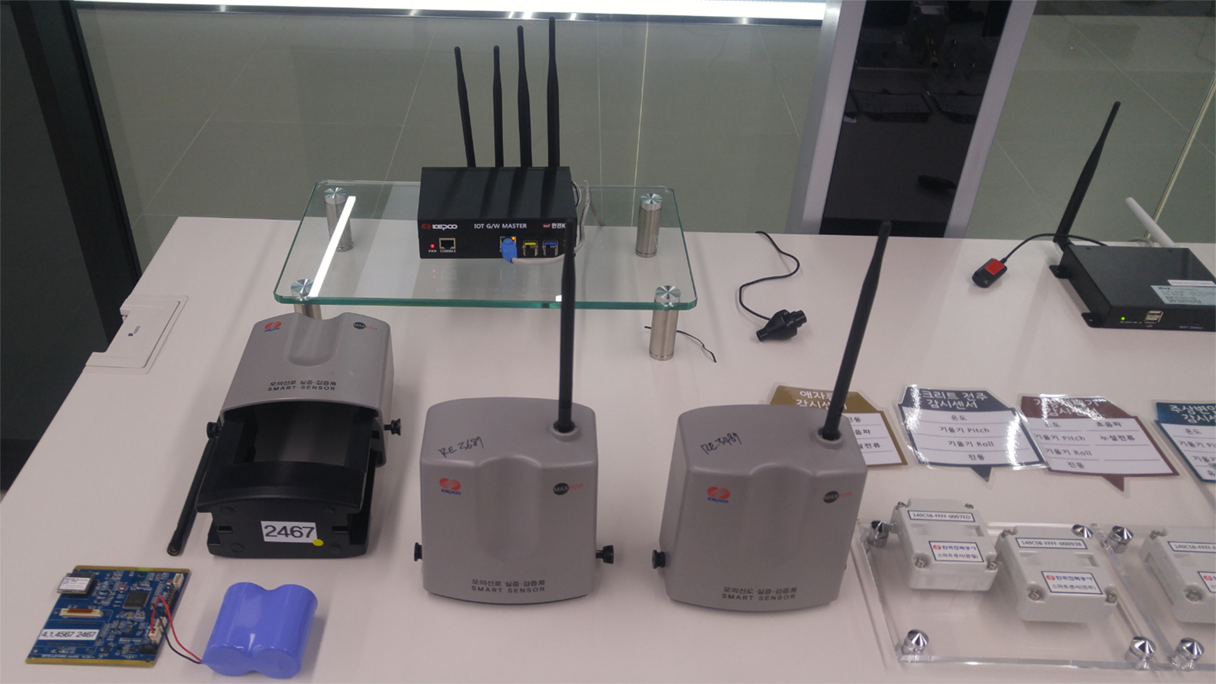 |
| [ Website for Developers ] | [ Development Support for IoT Sensors ] |
